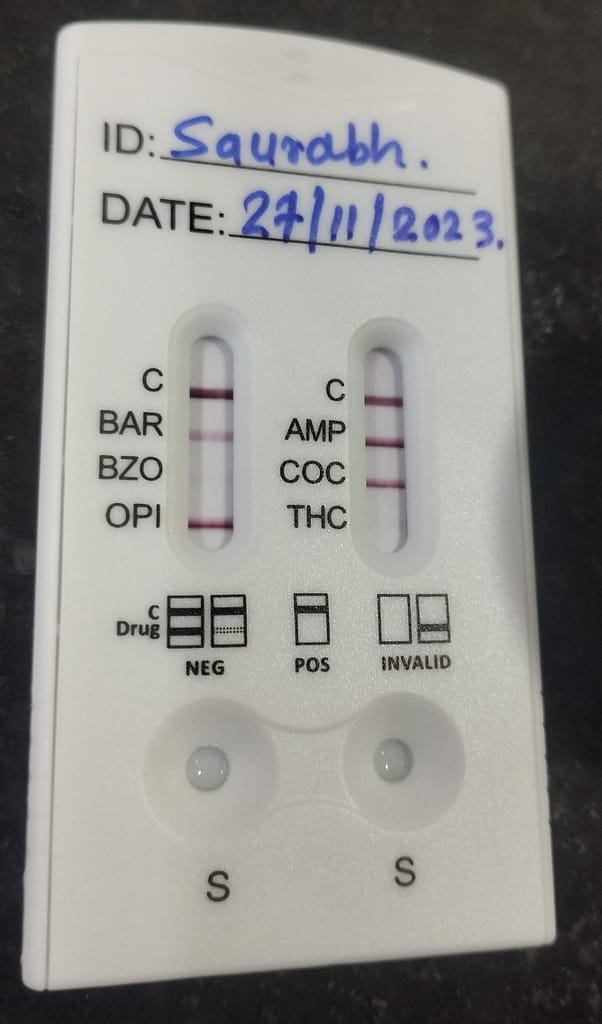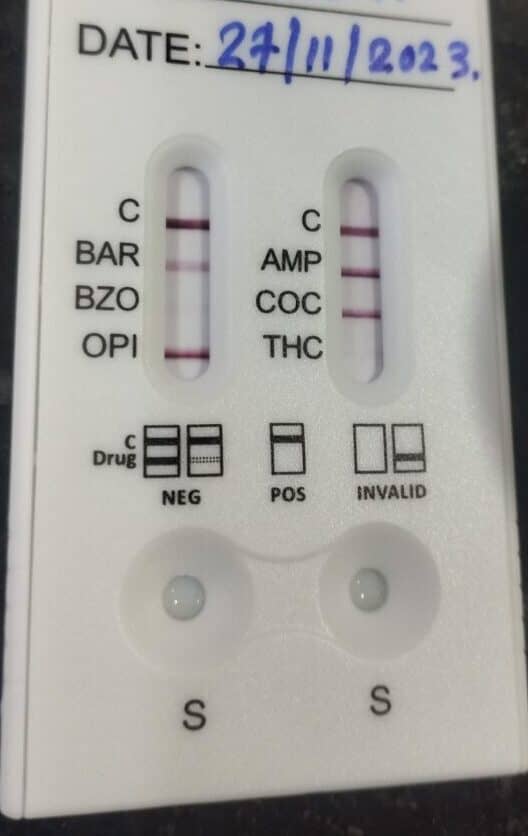Drug of abuse tests in urine are commonly conducted to detect the presence of specific drugs or their metabolites in an individual’s system. These tests are often used in various settings, including employment screenings, legal situations, and healthcare settings.
The primary types of drug tests for urine include:
- Immunoassay Tests: These are the initial and most common type of drug tests. They are cost-effective and provide quick results. Immunoassay tests use antibodies to detect the presence of drugs or their metabolites. While they are sensitive, they can sometimes yield false positives or false negatives. Rapid immunoassays should be used only for screening.
Principle behind immunoassay tests involves the use of antibodies to detect the presence of specific drugs or their metabolites in urine sample. If drug concentration is below the cutoff concentration ,it will not saturate the binding site of its specific antibody.

Limitations of Rapid immunoassay method for drug of abuse testing
Rapid immunoassays provides only qualitative preliminary analytical results. Gas chromatography/mass spectrometry (GC/MS) is the preferred confirmatory method.
Adulterants like bleach ,alum may produce erroneous results ,if suspected test should be repeated with another urine specimen
Presence of high levels of oxidants such as ascorbic acid may result in false negative results.
Over-the-counter cold medications containing pseudoephedrine can cause false- positive screening results for amphetamine.
Misinterpretation of Drug of Abuse (DAU) testing results can have significant clinical consequences, potentially leading to both underdiagnoses and overdiagnoses. To enhance the accuracy and meaningful interpretation of test outcomes, it is essential for laboratories to maintain open communication with clinicians and actively contribute to decisions regarding the test menu and performance.
Gas Chromatography-Mass Spectrometry (GC-MS) or Liquid Chromatography-Mass Spectrometry (LC-MS) Confirmatory Tests:
If an immunoassay test produces a positive result, it is often followed by a confirmatory test using GC-MS or LC-MS. These tests are more specific and can accurately identify the particular drug and its metabolites.
Common substances tested for in drug of abuse screenings include:
- Marijuana (THC): Detects the presence of cannabinoids, such as tetrahydrocannabinol (THC), the active compound in marijuana.
- Cocaine: Identifies the presence of cocaine or its metabolites.
- Opioids: Screens for opioids like heroin, morphine, codeine, and synthetic opioids (e.g., oxycodone, hydrocodone).
- Amphetamines: Detects amphetamine and methamphetamine.
- Benzodiazepines: Screens for drugs commonly used for anxiety or sleep disorders, such as diazepam or lorazepam.
- Phencyclidine (PCP): Identifies the presence of PCP, a dissociative anesthetic.
- Synthetic Drugs: Some tests may also include screening for synthetic drugs like synthetic cannabinoids or designer drugs.
It’s important to note that the specific panel of drugs tested for can vary depending on the purpose of the test and the testing organization’s requirements. Additionally, legal and medical regulations regarding drug testing can vary by jurisdiction.
reference
Stacy E. F. Melanson, Leland Baskin, Barbarajean Magnani, Tai C. Kwong, Annabel Dizon, Alan H. B. Wu; Interpretation and Utility of Drug of Abuse Immunoassays: Lessons From Laboratory Drug Testing Surveys. Arch Pathol Lab Med 1 May 2010; 134 (5): 735–739. doi: https://doi.org/10.5858/134.5.735

